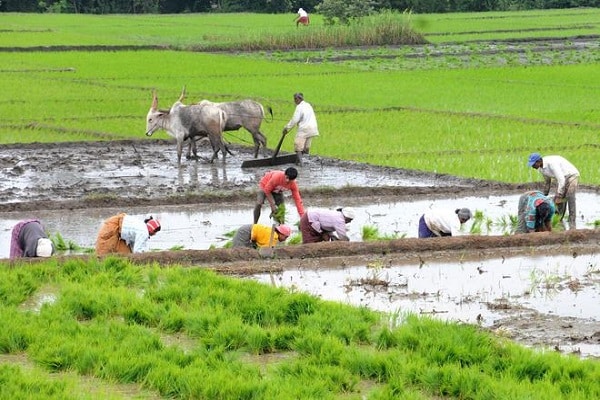The realm beneath paddy — the most important foodgrain throughout the kharif season — was nearly 13 per cent decrease within the week ended August 5 as in comparison with the identical interval final 12 months regardless of a slight pick-up in rains in the primary rising areas, triggering fears of a 10-12 million-tonne drop in ultimate output.
Sources stated with the height sowing season for paddy nearly coming to a finish within the big-growing states, any uptick in protection from right here onwards might not give the specified yields.
With 30 percent of regular common space through which paddy is grown yearly remaining unsown until early August, there’s a restricted likelihood of an enormous uptick in output, commerce and market sources stated.
Within the earlier kharif season, India produced over 111 million tonnes of rice.
In a number of states, farmers have already moved on to different short-duration crops corresponding to pulses and coarse cereals abandoning paddy.
In line with the India Meteorological Department (IMD), between June 1 and August 8, the southwest monsoon is round 7 percent greater than regular (cumulatively throughout the nation).
Nonetheless, in main paddy-growing states of UP (-40 per cent), West Bengal (-25 per cent), Jharkhand (-48 per cent), Bihar (-35 per cent) and Odisha (-9 per cent), the rains are woefully quick.
Collectively, the 5 states account for greater than 40 per cent of India’s complete annual rice manufacturing, estimated to be over 120 million tonnes.
Much less paddy acreage has been reported from West Bengal (1.2 million hectares), Jharkhand (0.93 million hectares), Bihar (0.48 million hectares) and Chhattisgarh (0.43 million hectares).
The scenario is comparable in Uttar Pradesh (0.38 million hectares), Madhya Pradesh (0.37 million hectares), Odisha (0.35 million hectares) and Telangana (0.28 million hectares).
India, the world’s second-largest producer and high exporter of rice, instructions a 40 percent share in world rice commerce.
It exported 21.2 million tonnes of rice in 2021-22, of which 3.94 million tonnes was the basmati selection.
The weekly knowledge additionally confirmed that aside from paddy, space sown beneath pulses is down marginally to 11.64 million hectares down from 11.94 million hectares.
Nonetheless, the acreage beneath coarse cereals, oil-seeds, cotton, sugarcane and jute in addition to mesta is greater until August 5, 2022, as in comparison with final 12 months. For many crops, the sowing is nearly over.
Information confirmed that the acreage of coarse cereals elevated to 16.03 million hectares up from 15.44 million hectares. Oil seeds sowing space was up at 17.47 million hectares until August 8, from 17.38 million hectares final 12 months.
Cotton sowing elevated to 12.12 million hectares, up from 11.35 million hectares.
Complete space beneath protection for all kharif crops was down at 90.86 million hectares until August 5, towards 93.66 million hectares throughout the identical interval final 12 months.
On the again of bumper manufacturing and excessive procurement in the previous couple of years, the Centre is sitting on a inventory of 47 million tonnes of rice (together with rice equal of unmilled paddy) as on July 1. That is towards the buffer norm of 13.5 million tonnes.
The Centre can use rice from its personal godowns to intervene available in the market, in case of worth rise.
Already, the Centre is supplying extra rice as a substitute of wheat by ration retailers. It is because its procurement of wheat fell sharply to 19 million tonnes this 12 months from 43 million tonnes final 12 months.
Armed with excessive ranges of inventory within the central pool, the federal government is offering rice at $0,037 per kg beneath the meals regulation and freed from value beneath the Prime Minister Garib Kalyan Anna Yojana (PMGKAY) to round 800 million folks, incurring large quantities of subsidy.
The PMGKAY is legitimate until September and it will likely be fascinating to see whether or not the federal government additional extends it or not, given the tight inventory scenario in wheat.
Source: business-standard.









